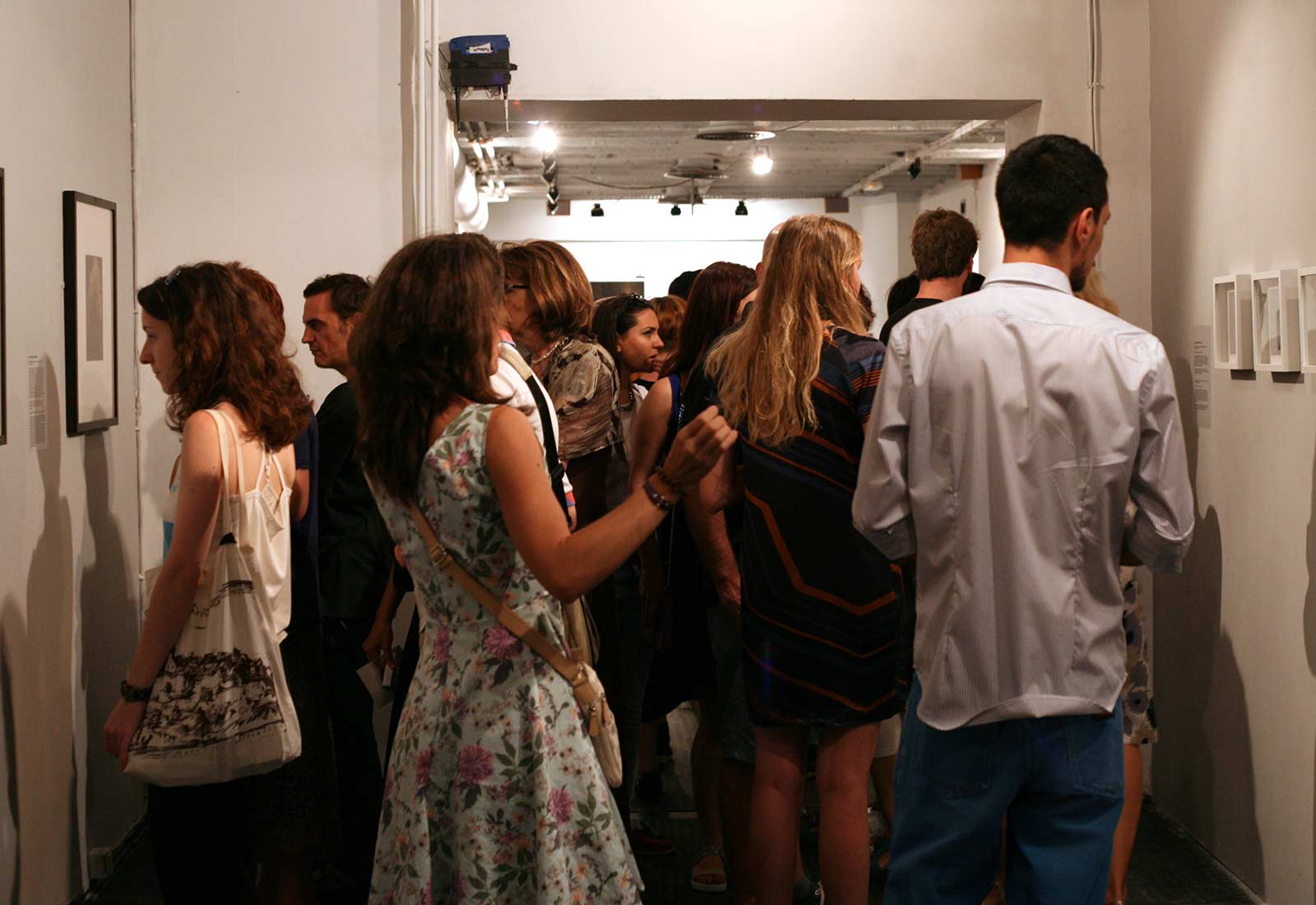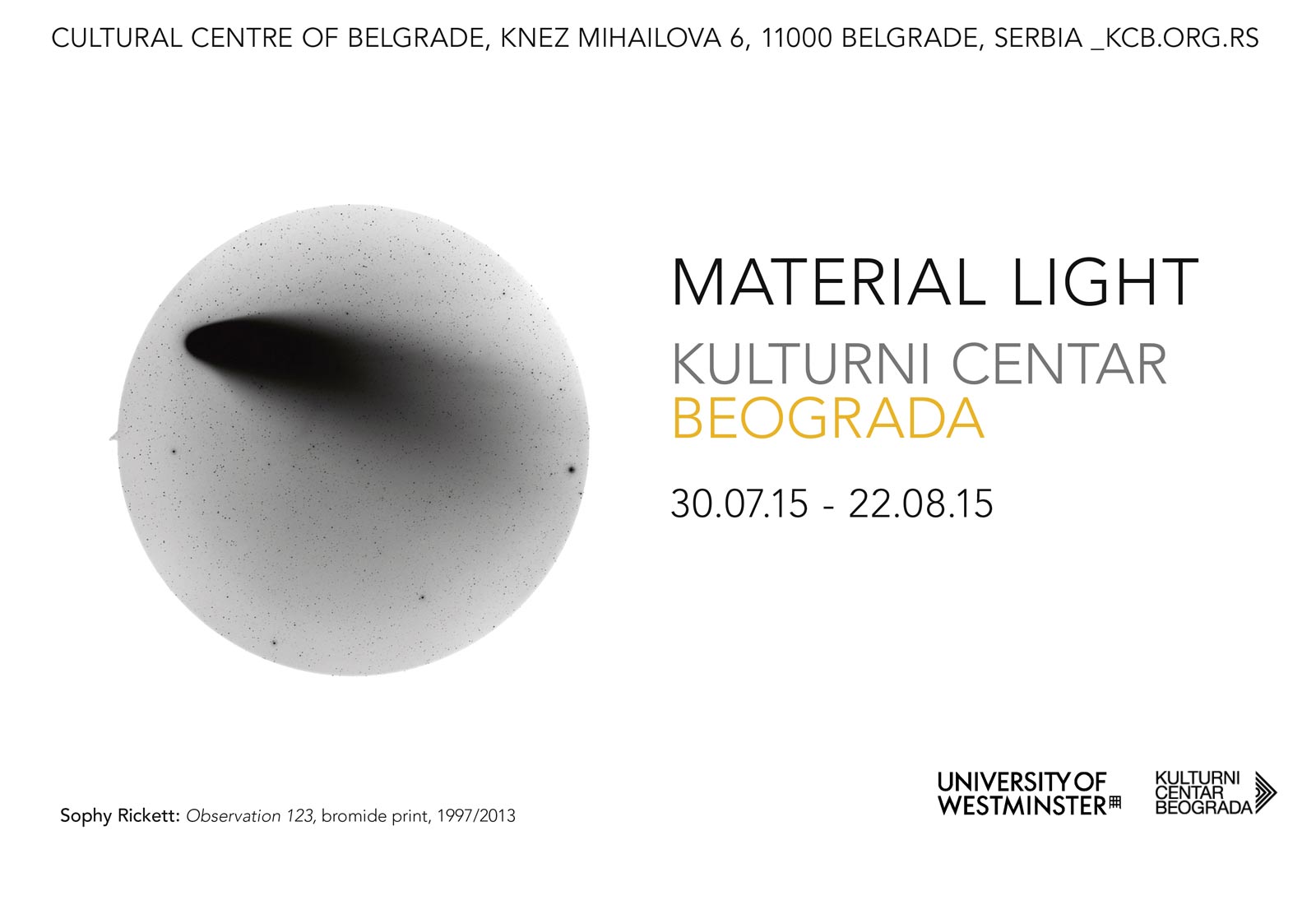For more images of the exhibition please see the ‘Material Light – Belgrade’
or ‘Material Light – Westminster’ pages
MATERIAL LIGHT is an exhibition of comtemporary and historical works which examine the material nature of the photographic image. The exhibition was first shown at the University of Westminster in London in December 2013, and then at the Belgrade Cultural Centre in Serbia. The list of artists (on the left) includes all the artists who have been a part of Material Light. For a list of those exhibiting in Belgrade please see the Belgrade page on this site, and those at Kochi the Kochi page..
MATERIAL LIGHT
Rather than causing the death of analogue photography, the dominance of digital media has recently increased interest in analogue and historical processes amongst image makers and artists. MATERIAL LIGHT explores the fallout from the collision of these two worlds through the work of artists for whom the photographic image is the main point of departure.
Hegel famously described painting and music as genres dedicated to “the sensuous presentation of ideas,” suggesting that important truths could be transmitted using emotive, sensory materials. Although an emphasis on sensory materials is not a requirement for photography or for contemporary art, this exhibition highlights the work of contemporary and historical practitioners for whom it is, or was, a central concern.
In parallel to the increasing popularity of digital photography in recent years, there has been a revival of interest in analogue and historical techniques, giving rise to the creation of works that explore the uniqueness and abstract potential of these processes.
The continual evolution of the photographic image has also seen the combination of digital and historical processes; in this exhibition we see the use of digital negatives in historical printing processes as well the interrogation of digital technologies through analogue techniques.
Also included are contemporary works which employ historical artefacts to evoke the past and signify the relationship of the photograph to history, memory and it’s role in the recreation and preservation of the past.
The availability of both analogue and digital processes allow artists to capitalise on their respective benefits and visual characteristics in pursuit of a range of visual and conceptual possibilities, either in concert or in conflict with the digital world.
ALLAN PARKER

